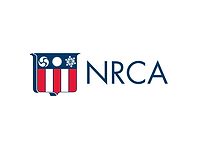Roofing Industry Exempt from New COVID-19 Safety Rules

Construction and roofing industries are exempt from following new rules published by OSHA on June 10 regarding COVID safety.
Roofing contractors, among most other industries, do not need to comply with new workplace rules released by the Occupational Safety and Health Administration (OSHA) to protect workers from COVID-19.
On June 10, OSHA published an emergency temporary standard (ETS) that aims to protect workers from contracting the coronavirus. However, the rules only apply to health care workers, a change from early reports that indicated the new standard would apply to various industries, including construction.
If the roofing industry were included in the new mandatory rules, companies would need to create a virus protection plan, provide employees with N95 respirators or other personal protective equipment, and ensure workers stay 6 feet apart from one another. The new rules would also require them to provide workers with paid time off for vaccinations and allow workers with the virus to work remotely or be given paid time off up to $1,400 a week.
Industry associations like the National Roofing Contractors Association (NRCA) were among those that requested OSHA not include construction in the new rules. Tom Shanahan, NRCA vice president of enterprise risk management and executive education, said he is happy that OSHA didn’t take a one-size-fits-all approach and recognized the differences between various working environments.
“Construction should not be swept up into that ETS,” Shanahan said. “Especially in the roofing industry, we’re working outside, as are most construction workers.”
Also voicing support for OSHA’s decision to exclude construction was the Association of General Contractors, which in a post on its website called the decision a “victory.”
“AGC led a broad coalition effort to question the need for the standard, considering the widespread adoption of coronavirus vaccines and the fact the construction industry has been operating, safely, since the start of the pandemic,” the website states.
Instead of the mandated rules, the Biden administration issued updated guidance to help employers protect workers who still aren’t vaccinated or are considered at-risk. The guidelines suggest precautions like staggering break times and arrival/departure times and limiting the number of unvaccinated people in a vehicle.
The decision marks another relaxing of standards from OSHA. In May, the agency updated its COVID-19 FAQ page to say that employers no longer need to record adverse side effects their workers experience from a COVID-19 vaccination.
Shanahan said he isn't receiving as many COVID-related questions from contractors as of late, with much of the industry now focusing on the supply shortage crisis. However, that doesn’t mean the roofing industry is out of the woods yet. The NRCA is part of a collection of associations encouraging roofing workers to get vaccinated to help end the pandemic.
“At this point, from my health and safety background, the more we can get people vaccinated, the more things will be closer to whatever normal is going to be,” Shanahan said.
The OSHA relaxations come on the heels of the Centers for Disease Control and Prevention releasing new guidelines stating fully vaccinated people can safely partake in nearly all activities without wearing a mask or physical distancing.
Looking for a reprint of this article?
From high-res PDFs to custom plaques, order your copy today!






